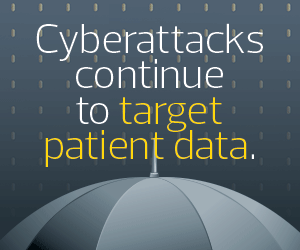How Hospitals Can Gain Visibility Into Their Data
If organizations do not know where their data is or what it looks like, they cannot properly secure it. Finding patient information within an organization is not an easy task and often requires computer programming skills.
Outdated technologies that leverage rules-based pattern matching to identify whether something is protected health information are difficult at best to get working properly, and they are no longer sufficient to protect healthcare organizations from their greatest risks.
But advancements in artificial intelligence are powering solutions to identify and inventory electronic protected health information (ePHI). The power of deep learning allows AI models to mimic the ability of trained humans in identifying ePHI, without needing to undertake cumbersome programming tasks and continuously tweak, test and analyze large amounts of search patterns and detection rules. That process is old school and limits organizations that want to scale.
LEARN MORE: How AI is making healthcare smarter.
How Hospitals Can Meet Better Standardization and Compliance
The National Institute of Standards and Technology provides guidance and resources for implementing security measures that comply with the HIPAA Security Rule, which serves to better protect patient information and reduce the impact of cyberattacks by safeguarding ePHI held or maintained by HIPAA-regulated entities.
As stated in the NIST 800-66r2 document: “The ePHI that a regulated entity creates, receives, maintains, or transmits must be protected against reasonably anticipated threats, hazards, and impermissible uses and/or disclosures.”
The document provides updated and crucial implementation guidance for HIPAA-regulated entities to proactively protect patient data and identify and manage ePHI risks. As the de facto standard for best practice, NIST 800-66r2 directs organizations to have an incident response plan for all areas in which ePHI is being used, stored or shared.
The first step to achieving this is to identify all of the places and so-called junk drawers of ePHI outside of the electronic health records system. Healthcare organizations can’t manage what they can’t see. They must first identify and inventory ePHI in order to protect this data from cyberattacks. That’s where a unified cloud-native applications protection platform can help.
Healthcare organizations seeking to modernize their cybersecurity approach should consider an AI-powered data security platform that can help identify and inventory ePHI. Traditionally, this is done by archaic rules-based systems made even more complex because over 80 percent of healthcare data is unstructured.
Healthcare organizations can leverage AI-powered solutions to manage and identify ePHI, reducing risks and saving costs. Those that have found success with such solutions report minimized risk against cyberattacks, fewer resources needed to manage data and lower cyber insurance premiums.
EXPLORE: Here five questions to ask about generative AI in healthcare.












